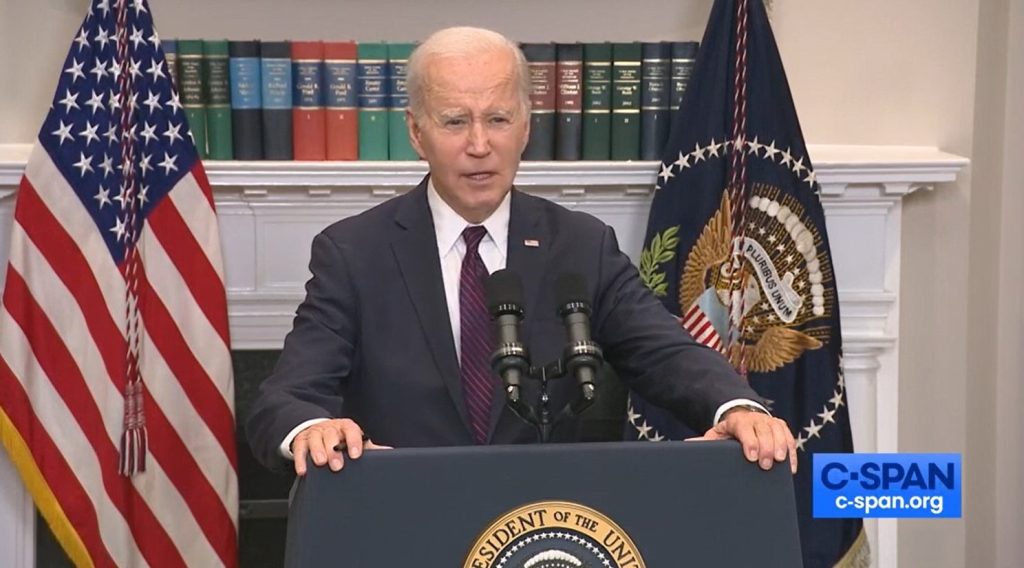New Mexico’s geology can make it hard for small water systems to meet safe drinking quality standards required by state and federal law.
Last month, the New Mexico Environment Department issued 50 notices of violation to drinking water utilities statewide. While many of them were for issues like failing to submit the proper reports or samples and do not necessarily mean the water is unsafe to drink, some of the water utilities were required to notify customers about samples exceeding maximum contaminant levels for substances like fluoride or uranium.
“A lot of what you see is naturally occurring fluoride from the geological strata, same thing we see with some of the natural occurring radioactive material,” John Rhoderick, NMED’s director of the Water Protection Division, said. “It’s very common across New Mexico.”
Regionalization efforts may be key to helping small water systems remove some of these naturally occurring substances.
Earlier this year, the legislature passed a law aimed at making it easier for water systems to regionalize.
Rhoderick said regionalization of water systems does not necessarily mean connecting them. It could mean sharing resources such as operators and other staff.
“One of the things that we are working towards is literally staffing them so that we can help communities do a root cause analysis,” he said.
Rhoderick said sometimes “you get so busy treating symptoms that you’re not addressing the root cause.”
He said one of NMED’s big pushes is to start reaching out to communities and helping them better understand what needs to happen for them to be successful in providing safe water to their customers.
Rhoderick pictures regionalization working similar to small farms coming together to hire crews to harvest crops. Farm cooperatives, he said, can consist of 15 farms that combine resources to hire a company to harvest their fields because, on their own, none of them could pay for the crews.
“More and more, it’s gonna be the New Mexico concept of family. We’re all family, we’re gonna have to help each other out on these things,” he said.
Expensive endeavors
Rhoderick said more than 80 percent of water systems in New Mexico serve populations of under 10,000 people and a lot of those serve fewer than 500 residents.
But solutions to fix water quality problems can cost millions of dollars.
“Those 500 people are not going to financially be able to support the costs of that,” he said.
Providing customers with safe water can be an expensive endeavor and, while there are some funding sources available, these can still be challenging for communities to obtain.
One example is the Clean Water State Revolving Fund, which provides loans for drinking water projects. That is the fund that received money through the federal Infrastructure Investment and Jobs Act.
But some small systems struggle to “get their ducks in a row” to qualify for that funding, Rhoderick said.
He said NMED is preparing to apply for a grant program for emerging contaminants targeted at addressing the needs of underserved communities and those that qualify as “being income prohibited” from doing things to address the contaminants.
He said “sadly most of the communities in New Mexico” qualify as income prohibited, meaning there is not enough money to make the needed changes.
Should NMED get the grant, Rhoderick said the intent is to use a significant amount of the initial funding to build up resources to visit the communities and perform water sampling and evaluations and to help them develop preliminary engineering reports.
He said the first step is to figure out what the solution is.
“If we can figure out the cause and we can address that, then we’re going to have systems that are successful 10,15, 20 years down the road like they should be,” he said.
Fluoride
Fluoride, in small quantities, can be beneficial to dental health. That’s why water systems in some parts of the country add fluoride.
But, in large quantities, it can actually damage teeth and, over time, weaken bones and lead to stiff joints and pain.
The City of Lordsburg is an example of one of the areas that struggles with high levels of fluoride.
In the 1980s, a study compared adults in Lordsburg to their peers in Deming. The study only compared people who were born in Lordsburg and Deming who still lived in those areas at the time.
Lordsburg residents were five times more likely to have carious lesions on the surface of the roots of their teeth than those who lived in Deming, where fluoride occurs at optimal levels in the drinking water.
Lordsburg’s water consistently tests above four milligrams of fluoride per liter of water, which is the level at which it can impact adults. At two milligrams per liter, fluoride can cause discoloration in children’s teeth. Last year, the City of Lordsburg’s water tested between 4.8 and 5.3 milligrams per liter.
In the notice of violation that NMED sent the city in July, the regulators state that the running annual average this year is 5.4 milligrams per liter.
The city has been working for years to get a new water treatment plant that will be able to reduce the levels of fluoride. It has been awarded capital outlay funding in the past to help with this effort.
People who live in areas with high levels of fluoride in their water should speak to their dentist and may need to find alternative sources of drinking water or install treatment systems at their house. Families with children younger than nine years old should find alternative drinking water supplies or install filters capable of removing fluoride.
Rhoderick is no stranger to high levels of fluoride. He said he grew up in a small Texas town where they relied on well water pulled from the Ogallala Aquifer that was naturally high in fluoride. He said when doctors and dentists looked at his teeth, they could tell he had been exposed to high levels of fluoride because of the discoloration.
He said fluoride is also a constituent that NMED looks at when dealing with septic systems because the effluent from septic systems can react with the strata and groundwater and lead to higher levels of fluoride.
But that isn’t the case for all communities and many of them in New Mexico have high levels of fluoride simply because of the geology.
Even building a water treatment plant that can remove the fluoride does not always solve the problem, Rhoderick said.
“You can build a facility that will strip those kinds of things out, but you have to be very cautious in how you operate it, you have to make sure you have the appropriate personnel, you have to maintain it. It’s not a one and done cost,” he said. “And so a lot of these communities struggle with the fact that, you know, they can get money together to build the system, but they don’t necessarily have the customer base to cover the cost to maintain it.”
He said NMED is working with communities and engineering firms. He said NMED is encouraging these firms and communities to step back from what he dubbed “Cadillac” concepts. Those are, he said, “the newest, shiniest, brightest thing.”
“But that community cannot afford anything and they really don’t need anything more than a good Chevrolet,” Rhoderick said.
If they go with the “Cadillac” model, Rhoderick said those communities could end up with systems that are expensive to operate and may not even be able to pay for operators with the right certifications.
“Within a matter of time, it’s no longer able to function like it was supposed to,” he said.
Uranium
It’s not just fluoride that is naturally high in the aquifers. Uranium can also be a challenge in New Mexico, as a mobile home park in Santa Fe can attest.
During the first two quarters of this year, water samples from the water system serving the Pojoaque Terraces Mobile Home Park tested at more than 70 micrograms of uranium per liter of water. This is more than twice the maximum contaminant levels.
While it is not considered an emergency and does not pose an immediate risk, the notice that NMED required the water system to provide customers states that some people who drink water containing high levels of uranium over many years experience an increased risk of cancer and kidney toxicity.
Rhoderick said the mobile home park is not near any past uranium mining or milling operations but rather struggles because of the geology.
He said one of the reasons why uranium mining and milling was so common in New Mexico is because of the naturally occurring levels of the radioactive material.
Rhoderick said the Grants Uranium Mining Belt, which includes areas around Grants, Milan and Gallup, has had its water negatively impacted by past extraction and processing. But other areas of New Mexico still have high levels of uranium in their water despite not having a history of uranium mining or milling.
Unlike communities where mining and milling has occurred, places like the mobile home park do not have companies they can hold responsible for the contamination and seek financial compensation to pay for the clean up. Nor are there Superfund sites that are working to clean it up.
“They’re gonna have to figure out how to cover this cost of treatment and things like that at this point,” Rhoderick said.
He said the good news is that a lot of treatment processes that can be employed are able to treat multiple contaminants.
“So again, it’s let’s diagnose the cause, let’s figure out what we really need to treat, and get something in that’s gonna do the job efficiently, and usually cost effectively if you target it right,” he said.
Meanwhile, people who are living in areas with high levels of uranium in the water can install reverse osmosis systems that can effectively remove the majority of the uranium from their water.
These reverse osmosis systems are also good at reducing the levels of fluoride in drinking water.























